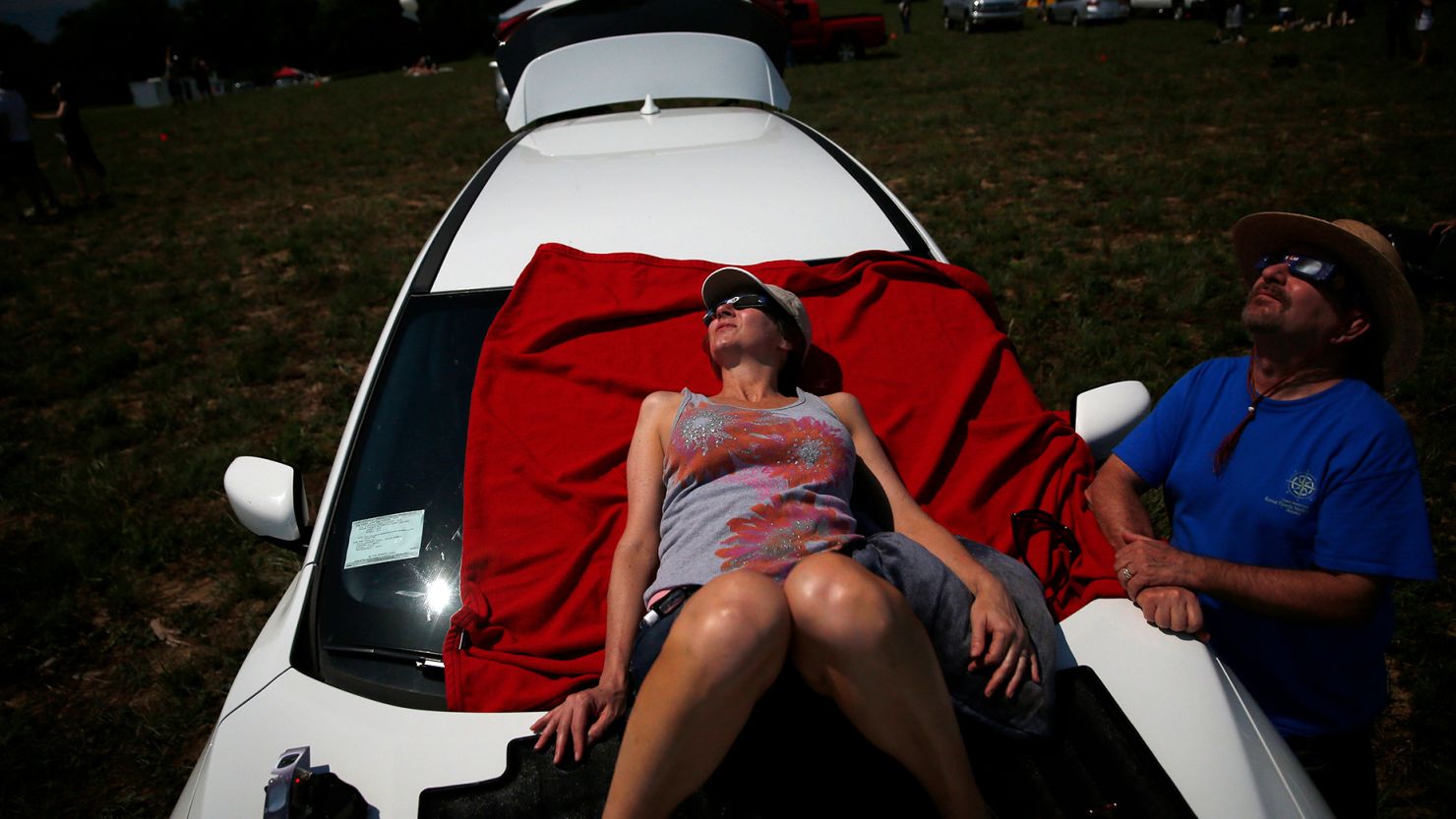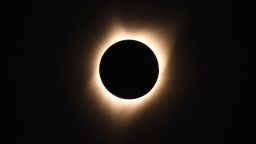Submitted by Michael Frankfort @mfrank_76
Wear red and green to experience the Purkinje effect during the total solar eclipse

Over two centuries ago, physiologist Jan Evangelista Purkyně noticed that red flowers looked bright carmine during sunny days but appeared to change to a deep muted hue come nighttime.
The phenomenon, now known as the Purkinje effect, explains why colors look different depending on how much light is present. In low light, bright reds appear darker, faded and sometimes almost black, while blues and greens tend to become more vibrant — and a total solar eclipse provides an ideal opportunity to observe this shift.
Usually, the Purkinje effect unfolds slowly as day gives way to night. The eyes, which use two types of light-sensitive receptors, begin to switch from using cone cells that give the brain information on what color is seen in bright light to relying on rod cells, which take over in low light and typically only pick up blue-green wavelengths well, said Will Snyder, manager of the Saint Louis Science Center’s James S. McDonnell Planetarium in Missouri.
During the total solar eclipse that will cut a path across Mexico, the United States and Canada on April 8, the moon will incrementally block the face of the sun, diminishing the amount of light available to the eye — so that color perception occurs much as it does during the evening. But because that transition from daylight to less-intense evening-level light happens relatively quickly during an eclipse, the contrast will be more noticeable, Snyder said.
MARK YOUR CALENDARS: ECLIPSE
If you’re in the path of totality or nowhere near Monday’s solar eclipse, make sure you mark your calendars to follow CNN’s live coverage.
Outlook | Google | Apple iCal | Office365
“What we’re seeing with the Purkinje effect isn’t actually happening. It’s just the way our eyes and brains are interpreting light,” Snyder said. “As we get into the totality with the darkening of the sky, our eyes don’t have time to keep up with those changes, so one of the consequences is things that are red tend to look much more muted (in comparison with) things that are blue or green in color.”
What to wear during the eclipse
During the twilight conditions of the eclipse, the cones and rods of the eyes will begin to work simultaneously due to the fast shift from light to dark, rather than the usual handoff of the cones to the rods that can take 30 to 45 minutes, according to the University of Texas at Austin. The cones will not be able to fully pick up colors in the dim light conditions, while the rods will pick up on the blues and greens, causing those hues to be more easily discernable than other colors in low light, Snyder added.
This adjustment period in which both cones and rods are active is known as mesopic vision, and the shift will be most noticeable a few minutes before totality, the eclipse phase in which the moon appears to cover the sun completely. In mesopic vision, the surroundings will have a gray or “sepia tone” look, according to the Saint Louis Science Center.
But for those not on the path of totality, the effect might still be seen depending on the degree of darkness experienced, said Dr. Grady Rylander III, a licensed ophthalmologist and professor in the department of biomedical engineering at the University of Texas at Austin. A partial eclipse where the sun is more than half obscured will cause daylight to dim, according to The Planetary Society.
To see the Purkinje effect, people will have to take off their eclipse glasses, but they should do so only when looking at their surroundings, Rylander said. “If you look directly at the sun, you must use eclipse glasses or else you will permanently damage your retina. … The Purkinje effect is visible if you look at objects around you during occlusion, not at the sun,” Rylander said in an email.
For those who hope to observe the phenomenon and want to see a stark color contrast as the event progresses, Snyder suggests wearing red and green while viewing the solar event to enhance the changes seen in the colors’ saturation.
The phenomenon can’t be captured on cameras since the effect is a result of the way human eyes interpret the light, he added.
“What makes (total solar eclipses) exciting is the relative rarity and all the cool phenomena that’s associated with it,” Snyder said. “You can just add this effect to that whole list of reasons why eclipses are cool.”


